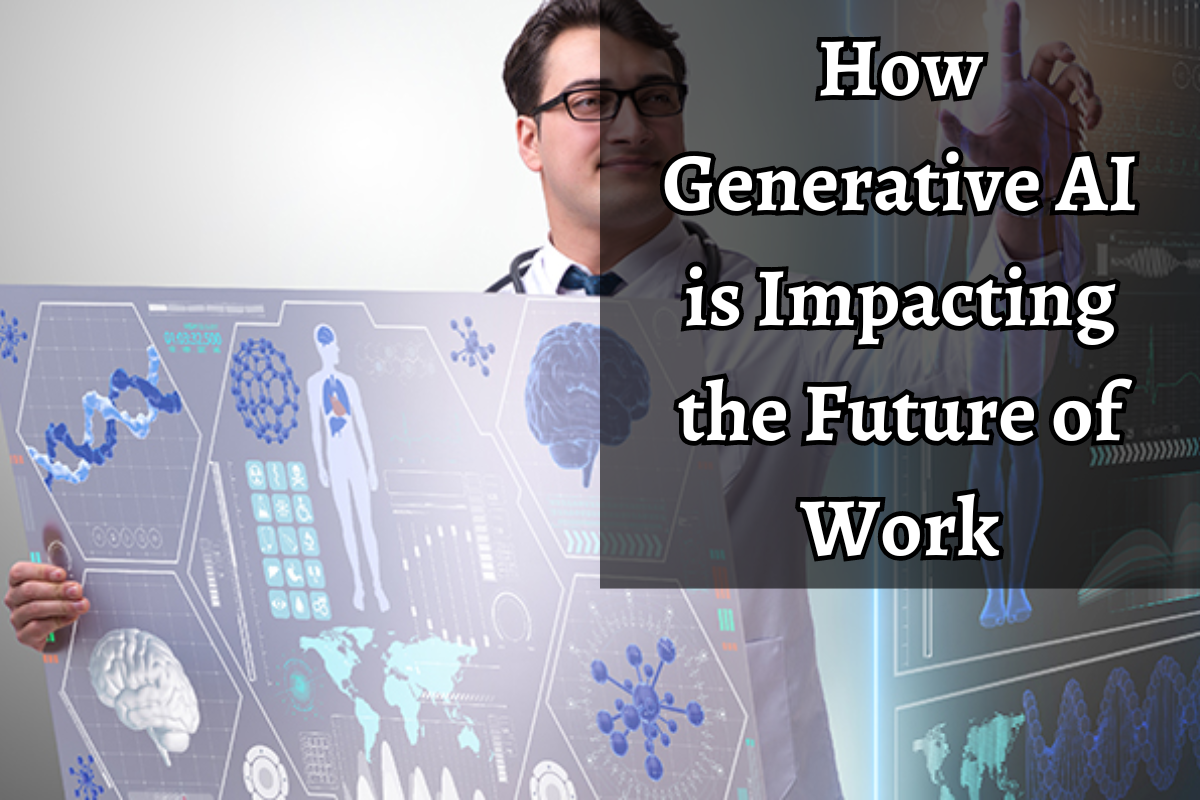How Generative AI is Impacting the Future of Work:Generative AI (gen AI) has become one of the most important tech trends very quickly. It is changing many fields by making automation, innovation, and decision-making better. Here’s a deep dig into the latest developments and what they mean.
1. Business Integration and Efficiency
Companies are using generative AI to make their processes more efficient and boost their output. Gen AI shows the most promise in the following key areas:
Supply Chain and Inventory Management: AI models are being used to predict demand, find the best amounts of inventory, and cut costs, all of which lead to big revenue gains.
Marketing and Sales: Generative AI helps make personalized marketing efforts and automates interactions with customers, which makes customers much more interested (McKinsey & Company)
2. Reduction in Operational Costs
Cutting down on running costs is one of the best things about generative AI. AI is being used by businesses to do things like automate customer service, handle HR jobs, and even make production lines run more smoothly. These changes not only make things more efficient, but they also cut down on the amount of work that needs to be done by hand.
3. Customization and Scalability
Generative AI solutions can be changed to fit the needs of each business, which lets them make their own AI models using their own data. Companies can choose to:
- Use off-the-shelf solutions, which are models that have already been trained and can handle most jobs.
- Create unique solutions that are tailored to specific needs, giving you an edge over your competitors (IBM – United States)
4. Risks and Challenges
There are a few risks that come with the fast growth of creative AI:
Inaccuracy: One big problem with generation AI is that it might give you wrong or biased information, especially when it’s used in complicated areas like customer service, coding, or artistic content. Bad data can hurt your image and make people not trust you.McKinsey and Company
Cybersecurity: As AI is used more in businesses, there are more risks to their data. Generative AI systems can have data breaches and be abused, which could let private data slip (Stanford HAI)
Digital Privacy: Generative AI models learn on a lot of data, which makes people worry about data breach and infringement of intellectual property (McKinsey & Company).
Also See: Gemini breaks new ground with a faster model, longer context, AI agents and more
5. Smaller, More Efficient Models
The move toward making models that are smaller and work better is another important step forward in generative AI. These models are made to work with hardware that isn’t as powerful. This makes AI technology easier for people and small businesses to use.
Low Rank Adaptation (LoRA) and quantization are two techniques that have made training and using AI models faster and more efficient (IBM, United States).
6. Generative AI in Creative Fields
In addition to making operations more efficient, generative AI has made big steps forward in artistic uses:
Making Content: AI is being used to make text, pictures, and movies. Media companies that need to make a lot of material quickly will find this very helpful. Writing stories, ads, or reports can be done with little help from humans using tools like GPT models.
Design and Art: Generative AI is making changes in fields like fashion, graphic design, and making video games. AI tools are being used to make new ideas, works of art, and even virtual worlds (IBM, US).
7. Future Prospects
Generative AI is still in its early stages, but it’s possible that future progress will be made in the following areas:
More Self-Driving AI Agents: By 2024, AI should be able to do more than just talk to people through chatbots. It should be able to do more complex jobs like making reservations or managing schedules (Stanford HAI).
Better control: As AI’s power grows, so does the need for regulation. There are already laws being made, mostly in the EU, to control the moral and legal effects of AI (Stanford HAI).
Conclusion
Generative AI is changing the way businesses work by making tasks faster, more accurate, and tailored to each customer. The technology has a lot of good points, but it also has a lot of problems, especially when it comes to accuracy, privacy, and moral use. Companies that can handle these problems properly while also taking advantage of the benefits of generation AI will have a lot of growth and success in the future.
